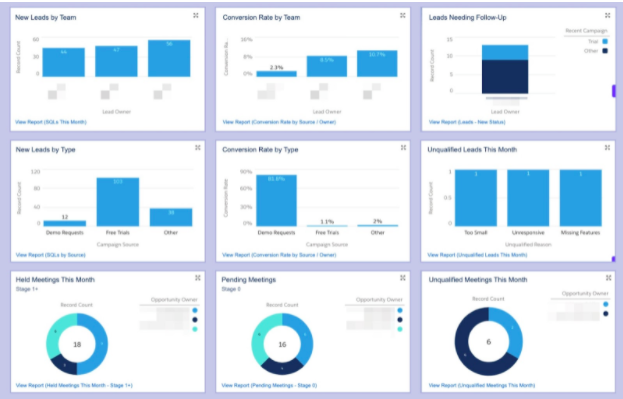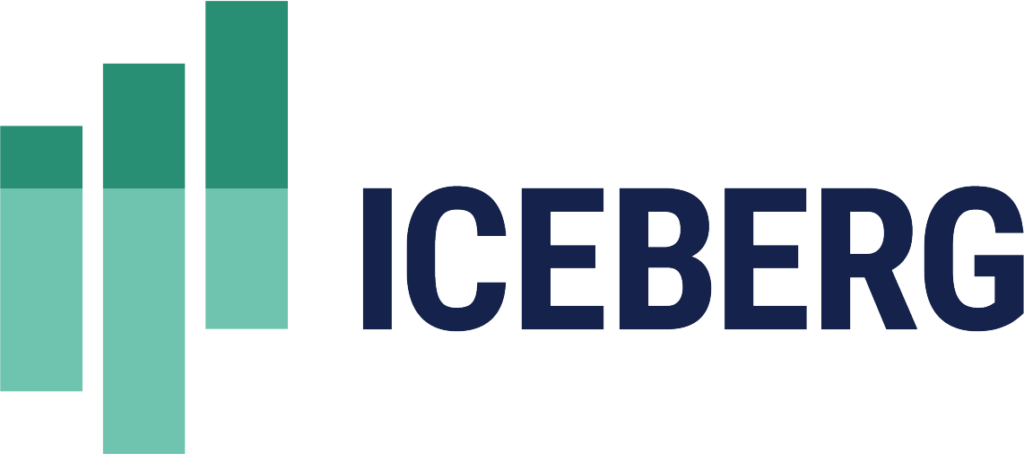You can customize most customer relationship management (CRM) tools to fit your organization.
But the best CRM for you is the one that maps processes in your sales funnel using the smallest amount of custom development. Many organizations focus too heavily on upfront price when selecting a CRM only to end up spending more money customizing a system that doesn’t meet their needs.
But, with a little planning, you can make the right choice.
Here are the top three steps for finding the right CRM for your organization.
1. Get clear on your operational requirements
Number of sales processes
If your organization has two or more distinct sales processes, this could be a flag for needing a robust CRM like Salesforce. Say you sell software to enterprise and mid-market companies across both retail and B2B. Their sales stages might look different. And chances are, the different paths will need to capture special data, forcing reps to follow different rules. For example, enterprise opportunities might be able to skip Stage 1, while mid-market can skip Stage 3.
Almost any CRM can be customized to meet an organization’s requirements, but choosing the right CRM depends on how much custom code you’re willing to pay for and how scalable your CRM needs to be. Salesforce allows more customization without custom code than most other CRMs, so teams with heavier customization are more likely to need Salesforce.
But, if your sales processes require less customization, a heavier CRM might be overkill.
Deal cycle complexity
If your organization sells multiple solutions and the quoting process is highly complex, you already know how costly one mistake can be when reps manually generate critical documents like quotes and order forms. In this case, your organization may benefit from a guided process without too much room for creativity. Smaller CRMs have limitations when it comes to creating complex rules to govern how they interact with records. You could probably build a custom solution to bridge the gap, but remember to consider the tradeoffs in cost first.
On the other hand, if the quoting process is simple, that aspect of your operations may not require the heavy functional support of a large CRM.
API integrations
Will your CRM need to share data with existing tools in your tech stack?
An Application Programming Interface (API) is a way for two software programs to talk to each other.
In this category, Salesforce is the clear leader. It has a robust API, meaning you can manipulate its functionality to a greater extent than most other competitors’ APIs. Salesforce’s API also provides richer capabilities that simplify custom development and allows access to more data. The vast majority of data stored in Salesforce can be picked up by the API and shared with other systems, whereas other CRMs limit sharable data.
Salesforce’s strong API also makes it easy for third-party apps to integrate with Salesforce. That means Salesforce opens doors to tens of thousands of other apps that extend its own functionality even further to meet your organization’s business requirements.
2. Determine which metrics matter to you
Trustworthy metrics are the natural outcome of alignment between your business processes and technology.
Think about this: What reports do you build most often? What big-picture metrics would provide the greatest insights for driving your business decisions? If you’re not sure, don’t worry. These answers can be hard to find and likely vary based on the stage and goals of your business.
One of the first things Iceberg does to get a handle on metrics with a new client is a project called “Canonical Reporting”. In this step, we determine which metrics are necessary to run the business. Think of it as building a compass to help steer the proverbial ship.
We start by defining each measurable step in the company’s revenue funnel and agree on definitions tied to revenue. Things like, What is a lead? What is an MQL, SQL, SAL, or Customer? Only after we define the funnel in this way can we talk about which metrics will help leadership run the business.
For some companies, this is a fairly straightforward exercise. For others, it’s a long process that requires infrastructure changes throughout the tech stack.
Iceberg also worked with several sales and marketing leaders looking to measure the level of effort it takes to convert a lead to an opportunity. This type of dashboard needs clear definitions that go all the way back to lead metrics and tracking meetings at the top of the funnel.
Here’s an example of a leadership dashboard that tracks activities at the top of the sales funnel.

Salesforce can deliver hard-to-get, 30,000-foot view metrics in a single dashboard thanks to the wide range of data it’s able to track. For example, Zoho CRM uses Contacts to represent people, whereas Salesforce can define people as both Contacts and Leads. Organizations with large lead volumes and those with multiple touchpoints need an easy way to track a lead’s location in the sales funnel along with the sales team’s performance. While it’s possible to surface this data using other CRMs, it requires a fair amount of hacking to match the complexity supported by Salesforce’s native design.
For full-funnel visibility, make sure your CRM relates activities across sales and marketing. Some CRMs are great at tracking one or the other, but not both. This makes it difficult to connect your go-to-market operations to revenue generation.
Sales team size is a factor, too. If you have a larger sales team and need to see metrics broken down into multiple teams or hierarchies, be sure the CRM you choose supports this level of granularity. Again, most CRMs technically could, it just comes down to how much you’re willing to spend on customizing and how easily you want to make changes in the future.
3. Choose a CRM that will help you scale
No one wants to go through the effort of implementing a new CRM only to be on the hunt again in a few years. Chances are, you want a CRM that can grow with your business. If you anticipate selling into new markets, growing your product offerings, or undergoing significant changes to your business structure, it may be wise to consider a CRM that offers flexibility without extensive custom development.
On the other hand, if you plan to target new markets but your sales process will stay mostly the same (and it’s already fairly simple), you might not need all the features packed into Salesforce.
Organizations looking to switch or add a new CRM have lots of choices. Choosing the right one comes down to priorities. Pipedrive, Copper, and HubSpot CRM are solid options that help sales teams organize leads and simplify reporting.
If you need marketing automation—specifically the ability to nurture prospects without sales involvement and track the effectiveness of marketing spend, HubSpot is a great choice. (HubSpot’s free version also works great for very small sales teams with a low volume of deals.)
If marketing automation isn’t a top priority, consider Pipedrive and Copper.
Remember, there are no hard and fast rules. It’s better to add up all the individual pieces of the puzzle—your long-term business goals, reporting needs, and sales process—to figure out where the tradeoffs will pay off.
Good news: Your options will narrow quickly
Choosing the right CRM feels like a head-spinning endeavor, but knowing the automation you need and the degree you’re looking to scale over the next few years will quickly eliminate CRM options that aren’t the best fit for your organization.
Leaner CRMs offer small businesses and those with less complex sales funnels immense value and functionality. Not only that, implementations are faster, they require less training, and generally cost less assuming custom development is minimal. On the flip side, there are certain complexity thresholds that when hit, make Salesforce the best choice.
Almost any CRM can be customized to meet your business needs. The key is to strike a balance between cost, complexity, and scalability that fit the highest operational priorities of your organization.
See how Patriot Software transitioned from its own internal database to Salesforce.


